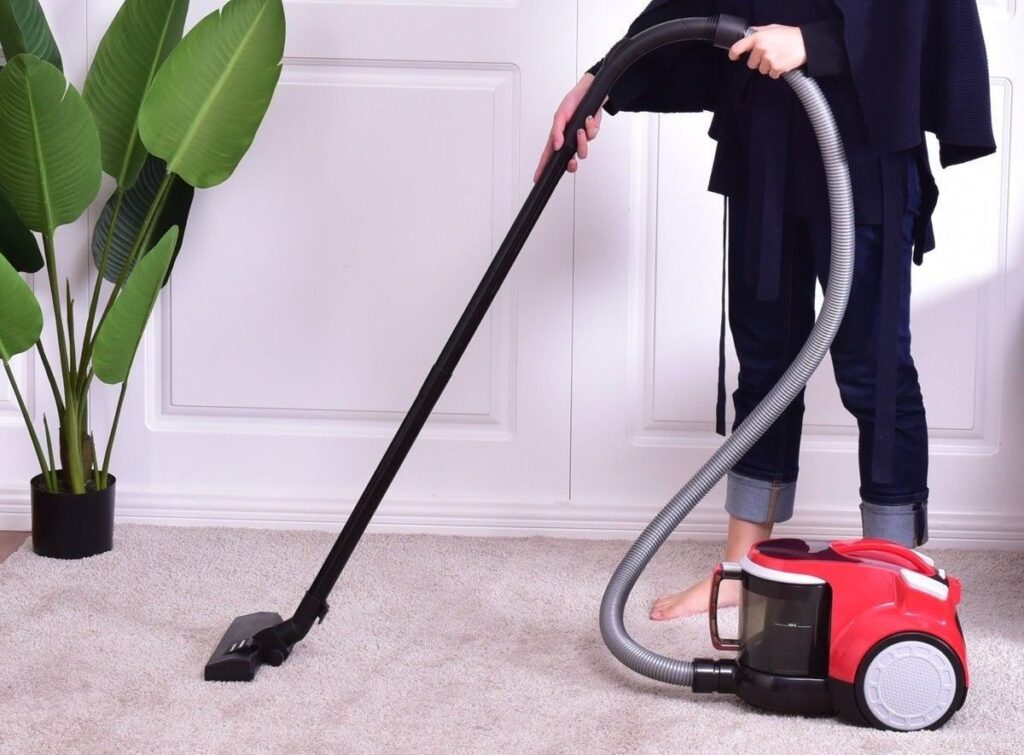If you’re like most people globally, you vacuum your house for less than an hour at a time—and that’s okay. But what do you do when you take out your Dyson vacuum and find that it doesn’t have enough charge to last you for an hour or so? You may have followed all the charging guidelines, but the gadget still won’t take charge or only briefly powers on before running out of juice again. We know how frustrating this can be, and that’s why we’ve put together some troubleshooting tips so that your Dyson vacuum will be running at full capacity in no time. Below is a troubleshooting guide and checklist that will have you vacuuming again in no time.
The best Dyson vacuum cleaners are powerful cleaning tools that make it easier to remove dirt and debris from your floors. But like all machines, they can stop working at any time. One of the most common problems people face with their Dysons is when they stop charging. Below are possible reasons why your gadget is not charging.
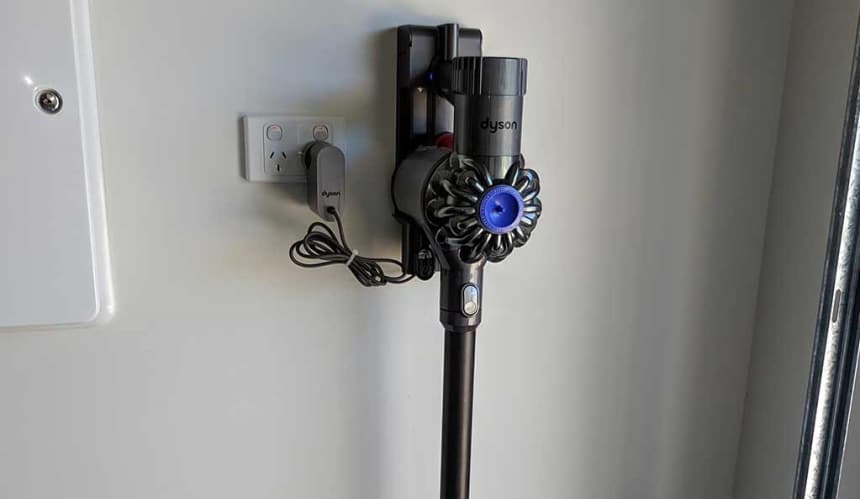
Sometimes you can be exhausted and stressed from a long day at work. That’s why it’s easy to forget to plug in your Dyson vacuum properly. The equipment needs to be plugged in for the battery to charge. It can’t just sit there and perform some magic self-charging act.
Here’s how to tell if your Dyson vacuum is plugged in: Check the cord coming out of the machine. You should see where it plugs into a nearby electrical outlet firmly. If it doesn’t look like it’s connected securely, you have plugged it in wrongly.
We’re sure you’ve plugged a cable before; you’re not a caveman! But maybe, just maybe, you’re doing it all wrong.
Because plugging cables is not just about puffing the plug and turning the socket on. It’s an art form. And it’s about time someone taught you how to do it like the boss you are. Okay, so let’s get down to business. The first thing you do is turn off the socket in question. Next, you need to plug in one end to the vacuum cleaner. Please give it a yank to ensure that it sticks in firmly.
Once you are done, plug the head into the socket turn it on. Voila, your Dyson appliance should now be charging. If not, check whether you have an electrical supply in your house by switching on one of your bulbs. Also, try out other sockets in your home. Continue with the checklist below if you still have the problem even after trying different sockets.
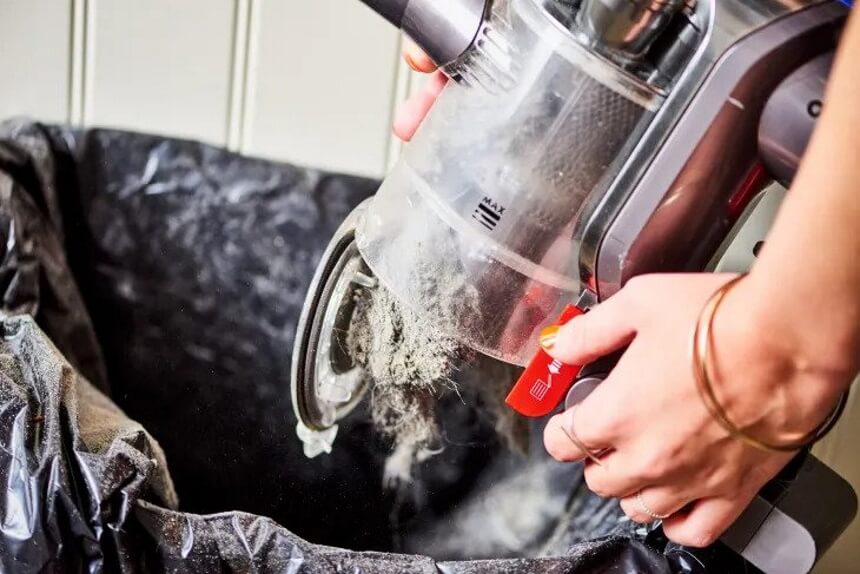
We all know that vacuuming all that dust and dirt is bad for your lungs, Trusted Source Chronic obstructive pulmonary disease - Vacuuming dust When it comes to cleaning up dust, many people brush it, try to blow it away or use a compressed air source. However, these methods will get the dust back up into the air – where it can be breathed in. Breathing in dusts can be bad for your health. Recent evidence suggests that uncontrolled dust exposure may be linked to COPD. Once dust is in the air, it is very hard to control. One of the simplest ways of controlling it is to stop it from getting into the air. www.hse.gov.uk but did you know it can also block up a vacuum cleaner’s airways? Just like when someone has an asthma attack and can’t catch their breath, blocked airways in a Dyson vacuum will prevent the device from charging.
The airway is a crucial part of your vacuum cleaner. Not only does the air pass through it, but the electrical current necessary to charge your vacuum cleaner passes through it as well.
Clogging occurs when you use your machine to suck up big particles such as fur, leaves, food particles, etc. If you open up your vacuum cleaner and it looks more like a dumpster than a machine, don’t worry. Your vacuum doesn’t need to be taken to a professional to repair the charging problem. It’s got to get cleaned out.
Here’s how:
If this solution doesn’t work for you, then it’s time to try others on this checklist. To avoid clogging in the future, consider investing in the best cordless vacuums for pet hair if you have a cat or dog. These machines are heavy-duty and do not clog easily.

Sure, we know—that doesn’t sound like fun either. But with batteries, there’s just no escaping the fact that they’re going to lose their ability to keep a charge Trusted Source Battery Capacity - an overview | ScienceDirect Topics Battery capacity (AH) is defined as a product of the current that is drawn from the battery while the battery is able to supply the load until its voltage is dropped to lower than a certain value for each cell. www.sciencedirect.com after a while. The more often you charge them, the faster they burn out on you. And one day, they’ll stop working altogether—which is why it’s important to keep an eye out for warning signs before you end up in this situation.
If your Dyson has less than 8 minutes of battery life left after charging it for 16 hours straight, something is wrong with your battery and needs replacing. You’ll also know it needs to be replaced if it shows the following signs. It doesn’t seem to have as much power as it used to.
If any of these are true, it might be time for a replacement! The good news is that you can get a replacement from the manufacturer without much hassle. However, we recommend investing in newer models that have the best battery technologies. According to most user reviews, the best model with a long-lasting battery must be the Dyson V11 vacuum cleaner variation that can run for an hour.
You’ve probably thought of all the reasons why, but it’s time to think about the one you might not have: the charging cord.
It’s possible that the charging cord has been damaged, causing it not to charge properly. Wires can get worn out if not maintained properly—and it’s rare for them to give way on their own spontaneously.
To confirm if the cord is causing the problem, inspect for wear and tear. If there’s nothing wrong with your cable, test it with a digital multimeter or a tester screwdriver. Plug it into your wall socket, then on the other end; connect the cable to your multimeter or tester.
If you do not have access to these, you could borrow a similar cord from your family and friends and test it out on your equipment. If you find that your vacuum’s power cord is damaged, you can get a replacement from the manufacturer (if it’s still under warranty) or buy a new one by yourself.
To avoid such inconveniences in the future, we recommend purchasing a cordless vacuum cleaner with high-quality charging cables and technology. The Dyson SV06 V6 Fluffy Cordless Vacuum Cleaner fits this profile and will serve you for years without worrying about wires. Also, do not forget to adopt proper cable management and storage practices.
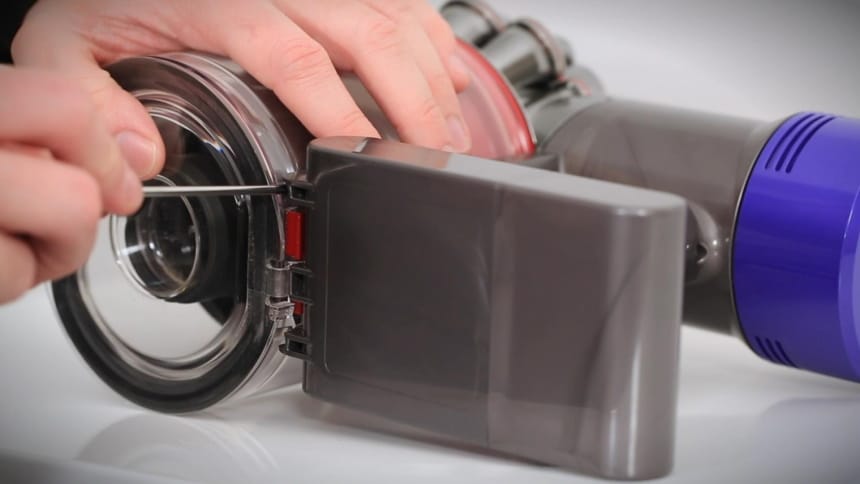
We understand how frustrating it can be when your vacuum cleaner is on the fritz, but with our guide, you’ll have it back up and running in no time! Unlike most vacuum cleaners, the battery pack in the Dyson machines is located on the handle. You can access it easily from the handle by lifting and removing a small cover held in place with Velcro. For older models before V10, the battery can be easily removed by pressing on either side or sliding it back. However, for V10 models and newer ones, you will need a screwdriver to remove the screws holding down the cover and release tabs under the casing.
Once you have removed your battery from your vacuum cleaner, inspect it carefully for any signs of damage. If there is any damage to your battery casing, you will need to replace your batteries as soon as possible, so you don’t risk having a faulty machine or running into an accident. If the casing is okay and shows no signs of damage, then continue with the checklist.
Another thing that could be preventing your appliance from charging is the fuse. If you have no idea what we’re talking about, a fuse is that cylindrical, thin thing with a wire running through it. Fuses are devices that prevent appliances from overheating and potential fires. They do this by cutting off power to the machine when there’s a short circuit. If your vacuum is not charging, your power cord may have become clogged with debris, so it can’t dissipate heat properly, causing the fuse to cut off power to the vacuum.
The best way to check a fuse is to look at it. Open the charging cord head using a screwdriver. If it’s split, broken, or missing, that could explain why your vacuum isn’t getting any juice. (You can also test the fuse with a multimeter) If the fuse looks fine, there are two other possibilities why it is not charging.
You should make sure the charger is mounted on a wall or other surface that can support its weight. If it’s hanging from a hook or the cord, it might not be able to charge as effectively as when mounted on a sturdy surface. To remedy this, please ensure that you’re following these instructions correctly:
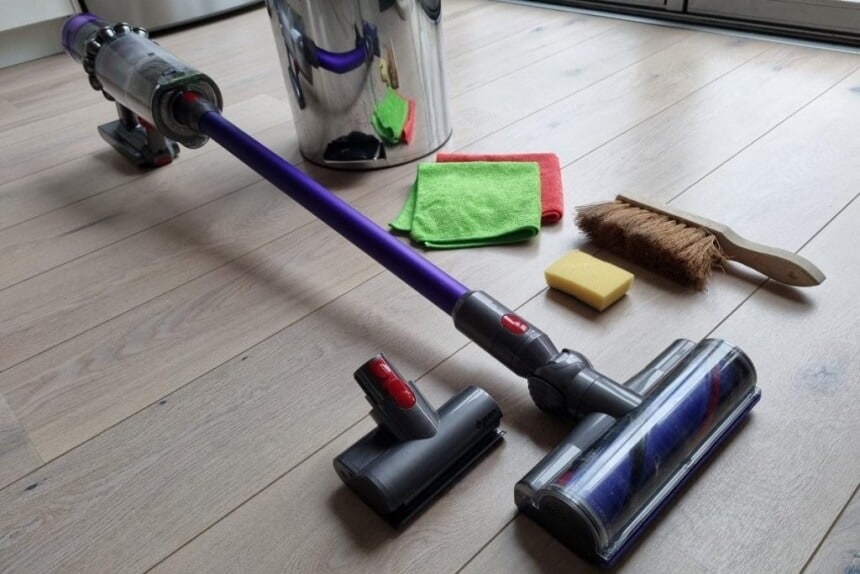
When your vacuum cleaner sucks up dirt, dust, and dander, some of those tiny little particles get caught in the filter. Over time, this buildup can prevent the battery from reaching full charge.
To avoid blockages, make sure that you clean the equipment regularly so that the airway is not blocked and you have a chargeable vacuum cleaner at all times. Cleaning your vacuum cleaner is not just important for the health of your vacuum; it’s also important for the health Trusted Source Microbial Contents of Vacuum Cleaner Bag Dust and Emitted Bioaerosols and Their Implications for Human Exposure Indoors - PMC Vacuum cleaners can release large concentrations of particles, both in their exhaust air and from resuspension of settled dust. However, the size, variability, and microbial diversity of these emissions are unknown, despite evidence to suggest they may contribute to allergic responses and infection transmission indoors. This study aimed to evaluate bioaerosol emission from various vacuum cleaners. www.ncbi.nlm.nih.gov of you, your family, and your home. If a vacuum cleaner isn’t cleaned every few months, it will lose suction power as dust and debris build up. You’re not cleaning anything when you vacuum, rather pushing dirt and dust around.
Ensure that you learn how to clean the Dyson vacuum cleaner to avoid damaging it. You could end up accidentally damaging its parts in the process. Do not immerse the appliance in water as it has electrical components.
We recommend that you purchase a powerful model that will continue charging, no matter how dirty it is. According to most user reviews, the Dyson Cyclone V10 Motorhead Lightweight Cordless Stick Vacuum Cleaner must be the best model that doesn’t stop charging because of dust and dirt particles.
It’s no secret that Dyson batteries are some of the best. They’re powerful, long-lasting, and reliable. But how can you know if the battery you’re buying is a genuine Dyson battery or one of the many knockoffs that are flooding the market?
The genuine ones cost more because they last longer, which means your vacuum will run for longer before it needs another charge. The fake ones don’t last that long, so you’ll need to keep getting new knockoffs. And if you think about it, buying a new product every couple of weeks will cost you more in the long run than just buying one that lasts as long as possible.
Plus, there’s no telling what kind of quality you’re getting with a fake battery. Sure, knockoffs might be cheaper, but they could also be unsafe—like they don’t provide sufficient protection against overheating or fire hazards.
So, why do knockoffs exist? The answer is simple: because people want to save money. When you’re considering whether to buy a Dyson battery, there’s one question you should be asking yourself: is saving money more important than the satisfaction that comes from knowing you have a genuine, high-quality product?
We’re not trying to shame anyone who wants to buy a fake Dyson battery—we know some of you need the discount! People often don’t know what they’re getting into when purchasing counterfeit products. This isn’t an issue with Dyson batteries alone, but rather something that can affect all sorts of products.
So, do not go for the cheapest model on the market. Go for those expensive models sold by the manufacturer or verified Dyson distributors. Ensure you have a warranty on the battery. If it spoils quickly, you will be able to get a replacement at a small fee or free of charge, depending on the warranty terms and conditions.
Here are some of the commonly asked questions about Dyson vacuum batteries and charging systems with their respective answers.
The problem lies in the battery, which is made up of cells, or individual components inside the case that power the vacuum. As time goes on, these particular cells can stop performing at their best—but if you have more than one cell (as in almost every vacuum), it’s possible to continue using your machine even after one cell stops working properly. When several cells stop working properly, your machine won’t be holding a charge for long.
A flashing red light means that there is a problem with your machine. It could be a short circuit, a loose connection, or other issues. You may see this light while vacuuming or while powering down. If you notice the light come on during use, immediately shut off the machine and remove the brush roll. Unplug the unit from its wall outlet if you were charging it, disconnect the cord from the back of the device. Contact the Dyson support team to get the issue identified and solved.
The blue light of your Dyson is a beacon of hope and a symbol of cleanliness. But what does it mean when it’s not charging?
Dyson V6 and V7 could stop charging because of several reasons. The machine could have a damaged charging cable or port. Your wall socket could be the main culprit, or even you’re charging station. The machine can be affected by dirt particles and clogging. Also, your battery could be dead and unusable anymore.
The problem likely lies in the battery. The battery is probably just not holding its charge anymore. The best solution will always be to call up Dyson’s customer support and take advantage of their generous warranty program. You will likely have to pay for shipping, but they’ll repair or replace your unit at no cost to you.
Well, there you have it! A few reasons your Dyson vacuum cleaner may not be charging, and what to do about them. We hope this guide was helpful—it’s always such a bummer when your Dyson isn’t working as it should, and we’d hate for you to miss out on the convenience of cordless vacuuming any longer than is necessary.
If you’ve followed all the steps in this guide and still can’t get your Dyson to charge, give the manufacturer a holler. If the vacuum is still under warranty, they’ll be able to help you fix it quickly so that you’re back to vacuuming your carpets in no time. Remember; don’t try to open it up yourself. You may damage the battery or another component, which will make it more difficult (and more expensive) to repair. Also, you might void the warranty if you open the gadget.




